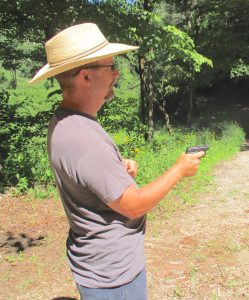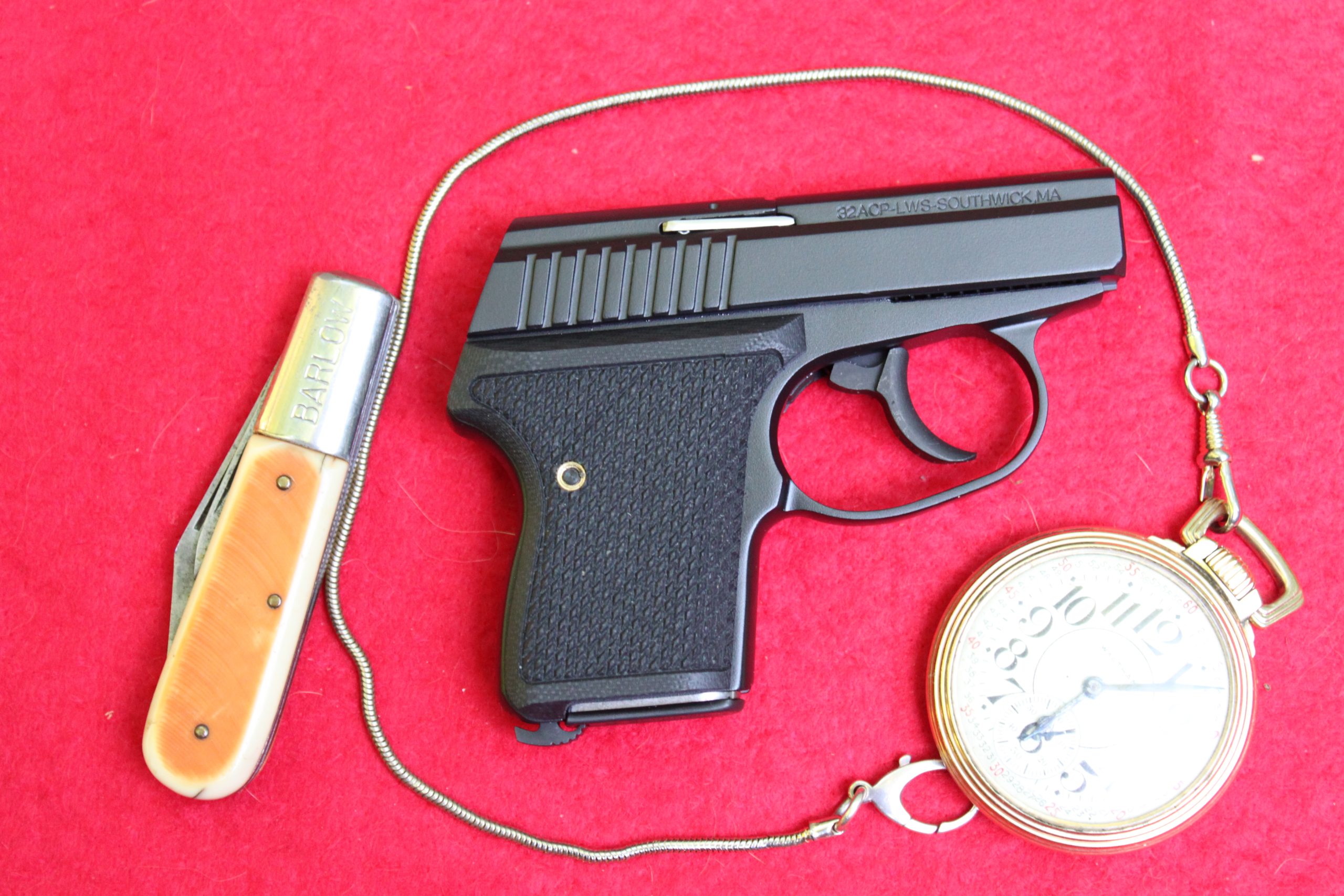
By Jim Dickson | Contributing Writer
The Seecamp is a .32-caliber semi-auto pistol that puts small size for concealment first.
It weighs a mere 11.5 ounces unloaded and is 4 ¼ inches long, 3 ¼ inches high, and 0.9-inch wide. Intended for point blank defense, there are no sights to snag. These micro mini size pistols are hard to hit with at any sort of long range, so this is no drawback. The only safety is a magazine safety as it relies on its double action only trigger for safety just as a revolver does.
Magazine capacity is 6 plus 1 in the chamber. Since a concealed carry pistol may work in a sweaty environment it is made mostly of stainless steel with certain parts such as springs made of carbon steel where appropriate. It should be remembered that stainless steel is rust resistant, not rust proof. Stainless steel guns need the same care and lubrication as carbon steel guns. I chose to test the black ceracote finish version as it offers additional corrosion protection and does not flash in the sun like bare stainless steel will.
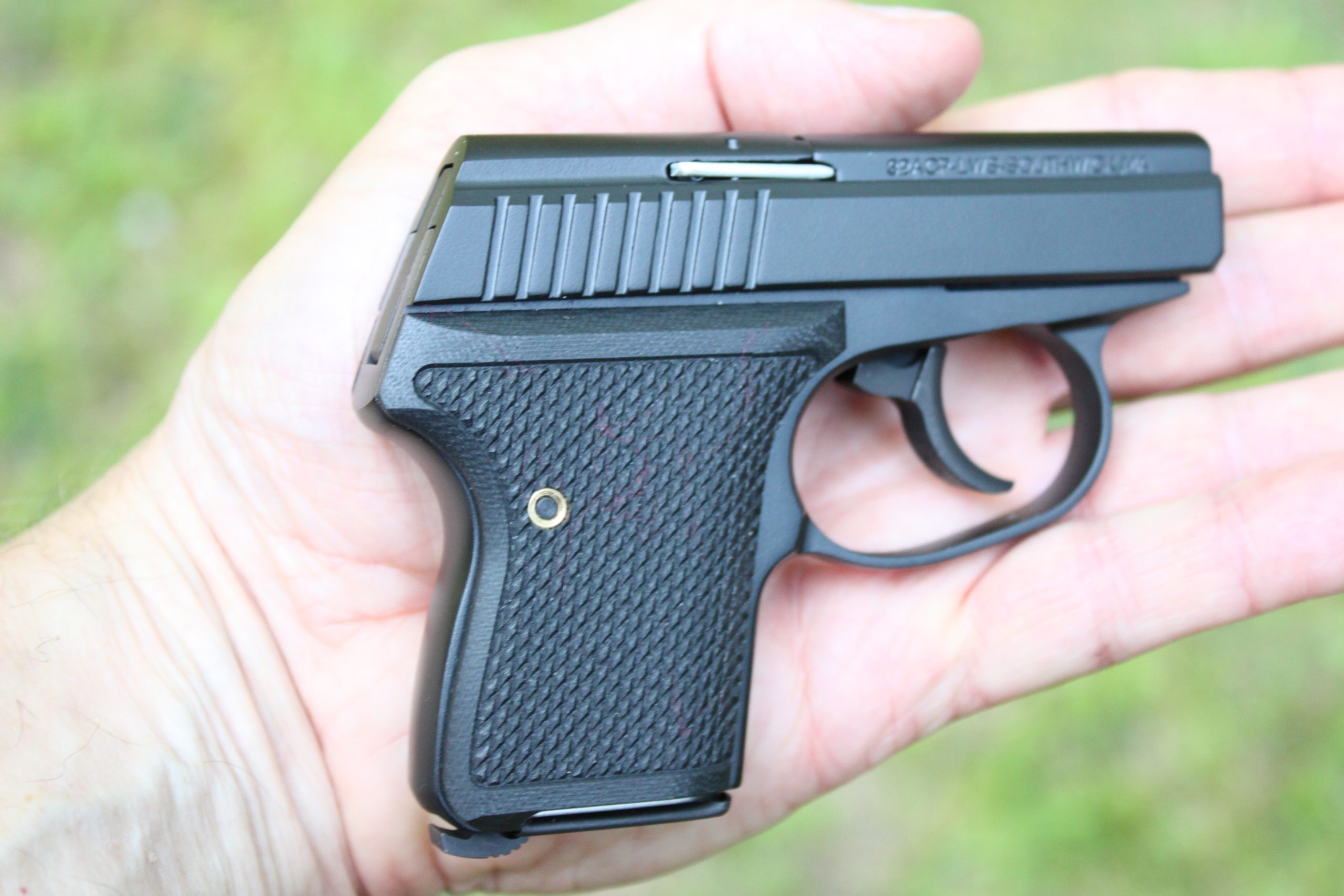
The Seecamp is adjusted for PMC Bronze 60-grain JHP ammunition and this is the only cartridge recommended for reliable functioning. The chamber has an annular ring for the expanding fired cartridge case to grip into, like the pre WWII German Mann .25ACP pistol making it a delayed blowback. This system is not designed for steel cased or aluminum cased shells.
This is a most delightful small pistol. When I picked up the test gun at Reeves Ace Hardware in Clayton, Georgia the reaction of everyone was positive towards it and the talk turned to stocking this pistol. No wonder. I have seen .25 ACP autos that were bigger than this diminutive little jewel.
There are multiple reasons why someone would want the smallest .32 available. The first is as a back-up to a full size pistol. Carrying a back-up pistol is common among those who are likely to need to use a pistol and the practice has saved many lives over the years.
The second is the fact that many people will not carry a full size pistol and opt for the smallest and lightest gun available. Even a small gun is far better than no gun at all. You may not have the range or stopping power of a .45 ACP but attackers are generally coming closer by the second and most are not fanatical Moros.
Then there are those who need a deep concealment gun that will hide where a larger gun cannot. The men in this position are glad whenever they can move up from a .25 ACP to a .32 ACP. Moving up further to a .380 ACP generally takes you outside of the size limitations demanded of these guns and while Seecamp makes a .380 the same size recoil in such a small gun makes rapid-fire much more difficult. Custom and often unconventional holsters are commonly found on guns carried in this category.
There are also the folks who don’t normally carry but will drop a pistol in their pocket when going around perceived danger provided the pistol is small enough. A larger pistol may be left behind to their peril.
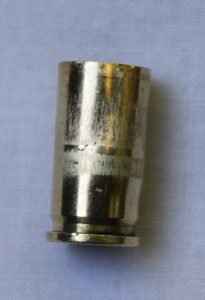
It is worth noting that the .32 ACP was considered an adequate military and police caliber in Europe throughout most of the 20th Century. It remains a popular caliber even today. Part of the reason is that in a full size .32 such as a M1903 Colt pocket pistol the recoil is so small as to be almost nonexistent. It’s about like shooting a .22LR. Of course with a micro mini .32 you give that up so you will notice some recoil but nothing serious.
It must always be remembered that the micro mini category firearms are emergency point blank defensive “belly guns.” If you want to hit a man at 200 yards with a pistol get a Luger or a M1911A1. The effective range of any of the micro minis is a few feet. You give up range and stopping power to get the maximum concealability possible and sometimes that is the overriding concern. Use them as they were designed to be used in their proper place and you will be well satisfied. Trying to substitute them for a full size military pistol though is like trying to drive nails with a handsaw.
Making such a tiny gun can mean design modifications to accommodate such a diminutive size. Never apply any pressure to the trigger while removing the magazine and never pull the trigger when the magazine is out of the gun. The reason is that pulling the trigger when removing the magazine deactivates the magazine safety and since the magazine supports part of the mechanism pulling the trigger with no magazine causes these parts to collapse inward where both they and the magazine will be damaged when the magazine is reinserted.
I had 250 rounds of PMC Bronze 60-grain JHP ammunition with a muzzle velocity of 980 FPS to test fire in the little .32 auto. The gun fed and ejected reliably.
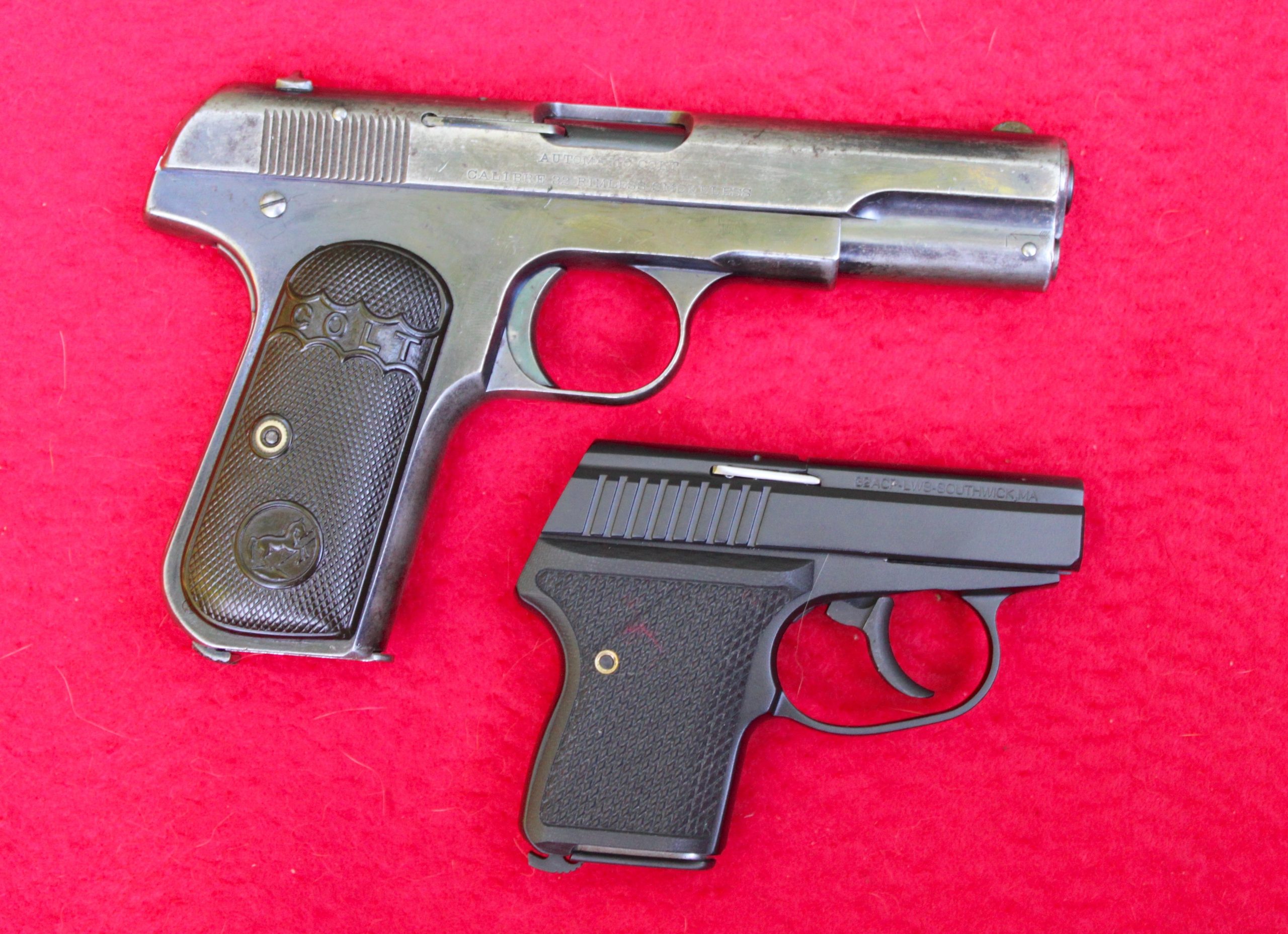
Fit, finish, and workmanship was as perfect as you could ask for. Ergonomics were good although this old blacksmith would have liked a bigger trigger and trigger guard. For me it was a tight fit. There was only room for one finger on the frame with the base of the magazine resting on top of last two fingers.
The trigger pull was double action only and could not be any lighter and still have enough force to set off the primers. One thing most folks don’t know is that the first double action automatics were originally developed to allow a fast second strike on a recalcitrant primer back in the days when ammunition was much less reliable than it is now.
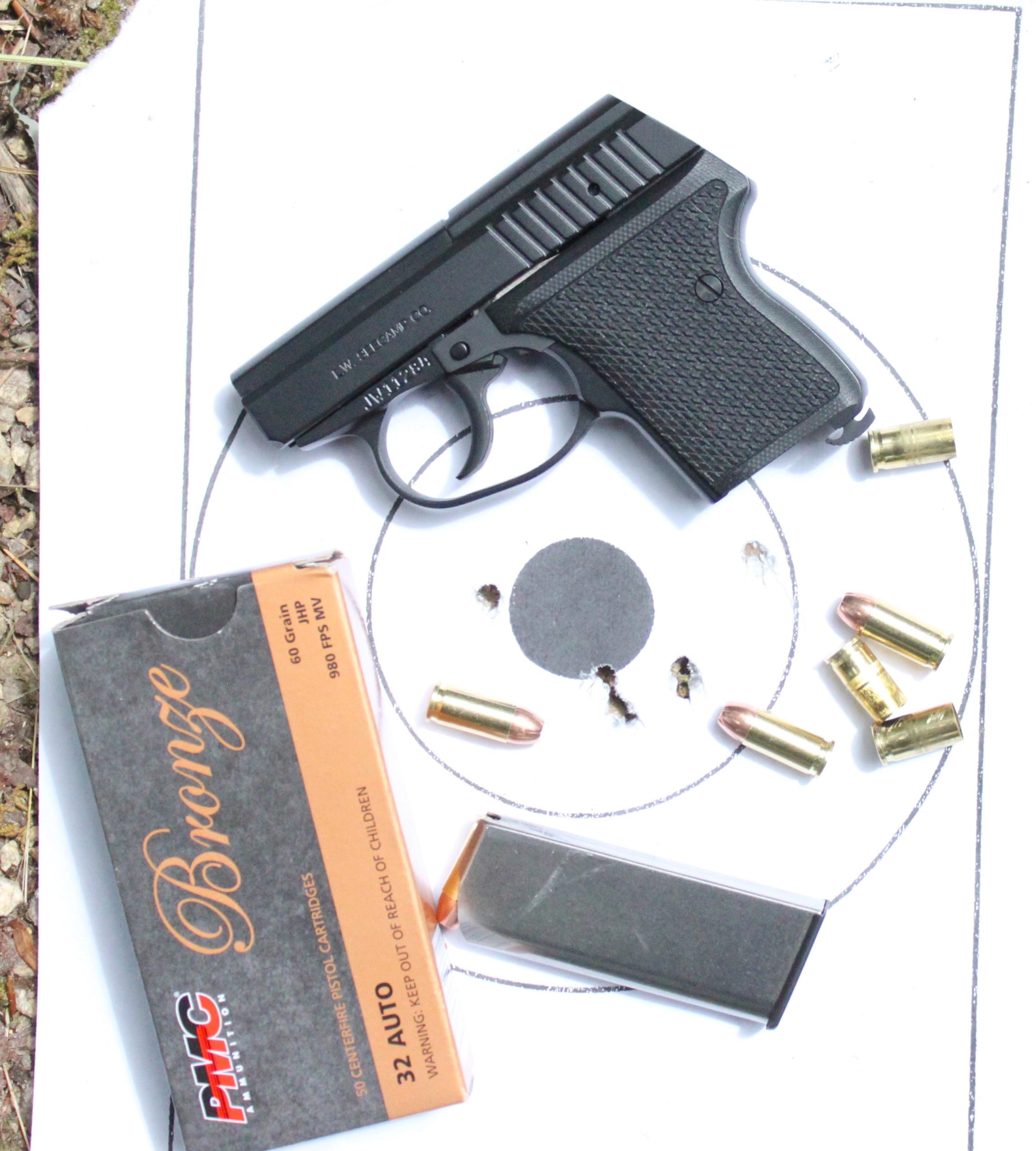
Recoil was noticeable but not bad and did not prevent rapid fire. That’s important considering the close range use for which this gun is intended. This is a point-and-shoot defensive weapon that will most likely end up being used in the low light conditions that attacking criminals like. You can’t see the sights anyway under these conditions, so the lack of sights is no draw back. This is a gun that has successfully been used for its intended purpose since about 1985 and it has achieved a good reputation among its users. It is not an all-round, do everything pistol but it fills its niche nicely and has a lot to recommend it.

